WooCommerce Reviews: Features, Pricing, Pros & Cons
WooCommerce is a WordPress-specific open source ecommerce platform. It allows you to sell physical and digital things, as well as things from other marketplaces.
In this article, I will provide you with information about WooCommerce through WooCommerce Reviews.
WooCommerce Overview
WooCommerce is a free plugin or functional extension for the WordPress platform. It has been downloaded more than thirteen million times and now powers over 37% of all internet retailers. WooCommerce provides basic product management, order processing, and shopping cart features to the WordPress platform.
WooCommerce allows you to set up a simple online store and sell a wide range of products and services, including real things, digital items, affiliate transactions, and continuing memberships. International clients, inventory management, sales tax management, shipping cost calculations, and coupons are all functions that the main software can handle.
Reasons to use WooCommerce
Free
WooCommerce provides sophisticated order monitoring as well as customer engagement capabilities that allow businesses to check past and open orders, alter delivery statuses, apply discounts, alter tax settings, manage inventory, alter shipping options, and create coupon codes. Everything a professional eCommerce store needs to be successful.
Easy to use and implement
When compared to some of the other main eCommerce platforms, WooCommerce is incredibly user-friendly and simple to use. It allows users who are already familiar with WordPress to quickly migrate to eCommerce.
Customizable and can grow with your business
Because there are hundreds of free and paid extensions available to add extra features to the WooCommerce store, WooCommerce is extremely adaptable. Accounting, payment gateways, marketing, reporting, and other applications and services are among the extensions available. This enables businesses to choose extensions and customize their store to meet their specific needs.
Reputable and offers great customer support
WooCommerce has been around since 2011 and has a reputation for being a great and dependable eCommerce platform that has only gotten better over time. The platform’s creators have a track record of providing dependable and competent products and services.
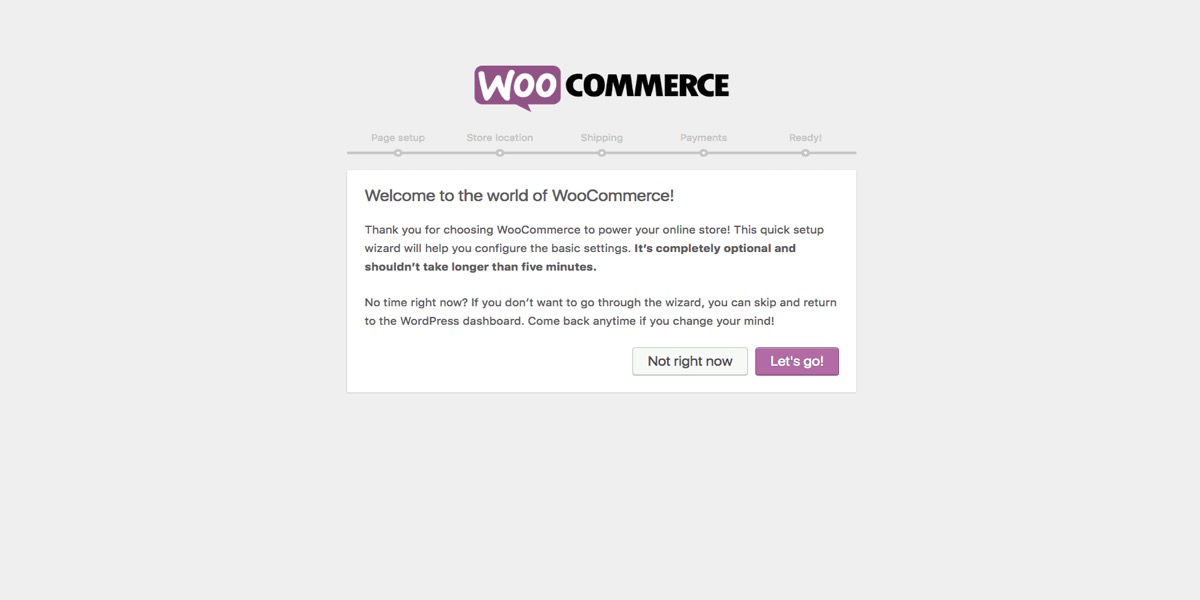
Pros and cons of WooCommerce
Pros
- Great for users who prefer WordPress
- Highly customizable thanks to the fact that it’s open source
- Plenty of integrations
- Active community of developers and experts
Cons
- WooCommerce updates don’t always work well with WordPress
- It is self-hosted which means you’ll have to handle updates and maintenance
- Requires knowledge and proficiency in WordPress
- While the WooCommerce plugin is free, costs can still run high when you factor in hosting, development, maintenance.
WooCommerce Features
WooCommerce uses a Core+Extensions model to provide functionalities. The platform comes with all of the essential features, and the basic WooCommerce bundle allows you to start selling right away. However, if your company requires more advanced shipping or checkout options, for example, you will need to invest in add-ons.
Here are some of the capabilities that come standard with every WooCommerce installation:
Dashboard: have all of the tools you’ll need to run your online store.
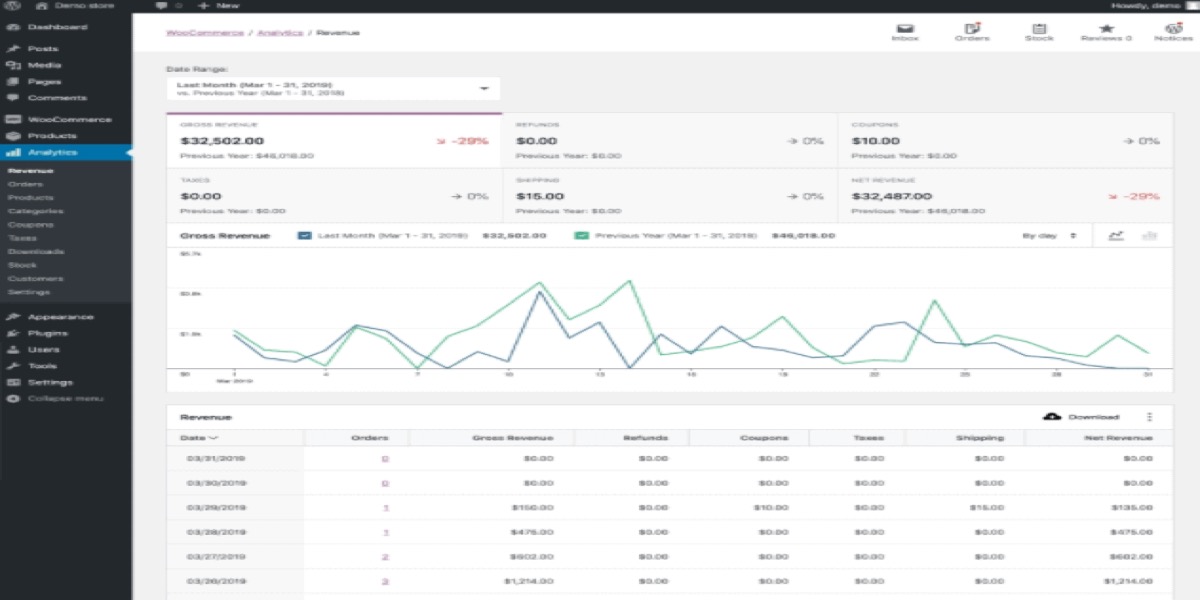
Products: Create categories for your items, add variants to each one, and sell affiliate products. Sell both digital and physical goods; simply mark a box to indicate that your digital goods do not require delivery.
Checkout: Allow consumers to register for an account or check out as guests on your website. Customers should be able to choose between pickup, local delivery, and shipment options. You may specify various rates based on shipping zones using the built-in automated shipping calculator.
Inventory Management: Use WooCommerce’s inventory management features to keep track of your inventory, hold stock if an order is canceled, and conceal out-of-stock goods from your shop.
Marketing: You may create coupons and discounts for any of your items, and you can apply them to any or all of them. Enable product reviews so that consumers may leave feedback. You may also check to see if only confirmed customers post feedback.
Blog: Because WooCommerce is designed to operate with WordPress, the majority of users already have a blog, and if they don’t, it’s simple to create one.
Tools for SEO: Take use of built-in SEO best practices.
Reports & Analytics: For in-depth analysis, integrate Google Analytics.
Mobile-Friendly Design: Your shop and admin are both responsive to mobile devices. Customers may shop while on the go, and you can manage their orders from any location.
Support for geo-location: Geo-location detects your customers’ addresses to make shipping and tax computations easier.
WooCommerce Design
All WooCommerce users have access to the free and versatile Storefront theme. You may also choose from a variety of Storefront child themes, including two that are free and 12 that cost $39. While Storefront isn’t the most exciting template I’ve ever seen, it’s a decent free alternative that keeps up with all WooCommerce upgrades. Spend some time investigating all of the choices to ensure you select the finest WooCommerce theme.
Storefront Powerpack ($69 for a single site) is another WooCommerce addon. Storefront Powerpack allows you to customize the look and feel of your Storefront site without having to touch any code. A more comprehensive solution, the Storefront Extensions bundle, is also available for $69.
You may always add plugins or child themes, or alter the HTML and CSS stylesheets, if you want even more control over the look of your store. Because WooCommerce is open-source, the adjustments you may apply to your platform are virtually limitless.
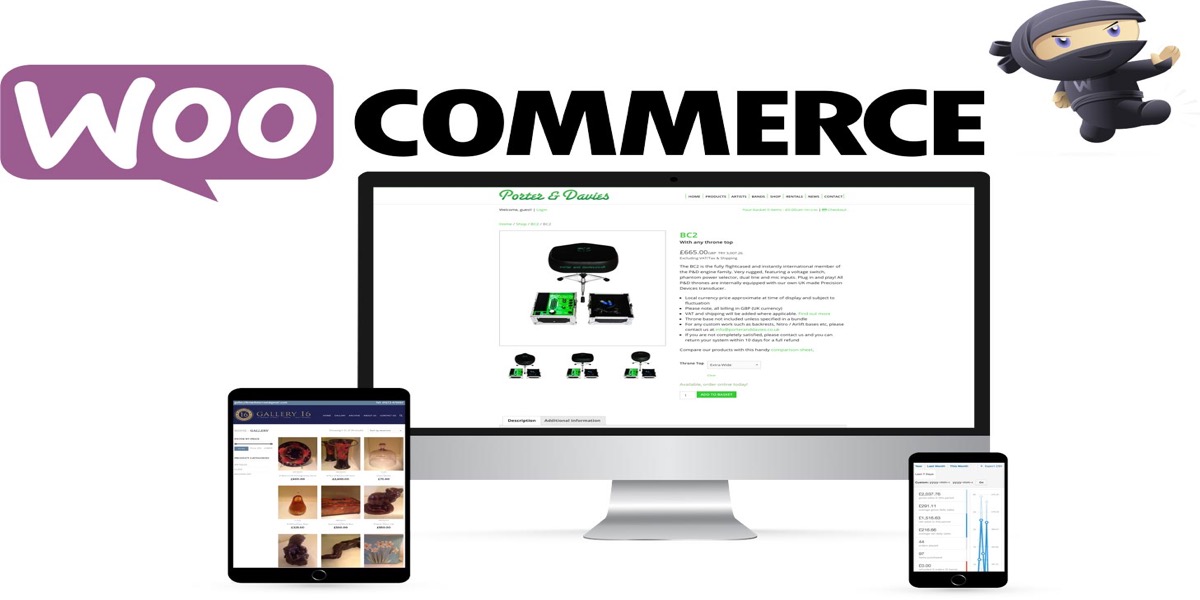
WooCommerce Integrations
WooCommerce’s platform is built on a Core+Extensions model. Any extra functionality you might require are available as extensions, which usually come at a cost. Hundreds of extensions are available in WooCommerce’s app store, including those created by WooCommerce and donations from developers.
I propose looking into extensions in the same manner you look into eCommerce shopping carts. Take your time to determine what you require. Then read a lot of product reviews and comparisons to see what will work best for your business.
On WooCommerce’s website, you can find a complete list of extensions. Tools for store management, marketing, payments, shipping, subscriptions, and more are included in this list. Remember that WooCommerce includes a REST API and extensive documentation. You can always pay someone to make a link for you if you can’t find what you’re looking for.
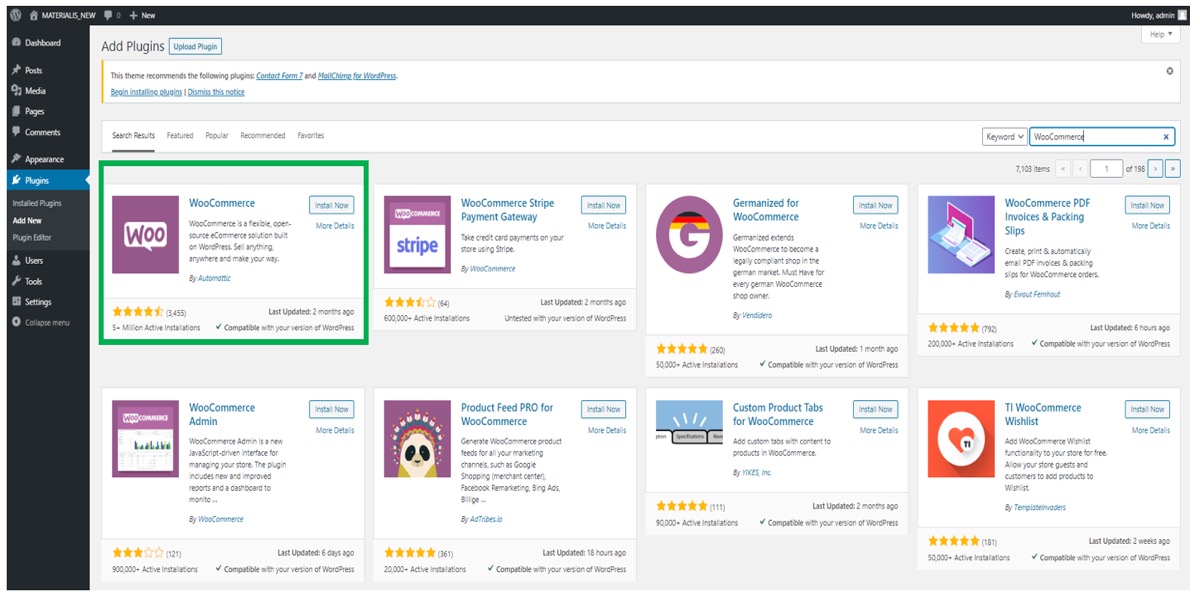
WooCommerce Support Service
WooCommerce provides self-help options, despite the lack of personal support. Documentation, FAQs, and other resources are among these resources. You’ll also be able to get help from the following sources:
Support Form: Customers with specific questions can fill out a contact form that includes their membership details as well as their question.
Community Forum: An active forum should be able to give you the answers you require, regardless of their nature. Log in to make a new topic or search past posts.
Videos: As you set up your store, use the “Help” drop-down menu to access tutorial videos.
Find An Advisor: WooCommerce offers WooExperts, who are verified partners who can help with specific or general issues.
Blog: On a wide range of themes, the WooCommerce Blog delivers insights, methods, and inspiration from WooCommerce specialists.
Social Media: Look for WooCommerce on social media sites like Twitter, Facebook, and Instagram, but don’t expect much help there.
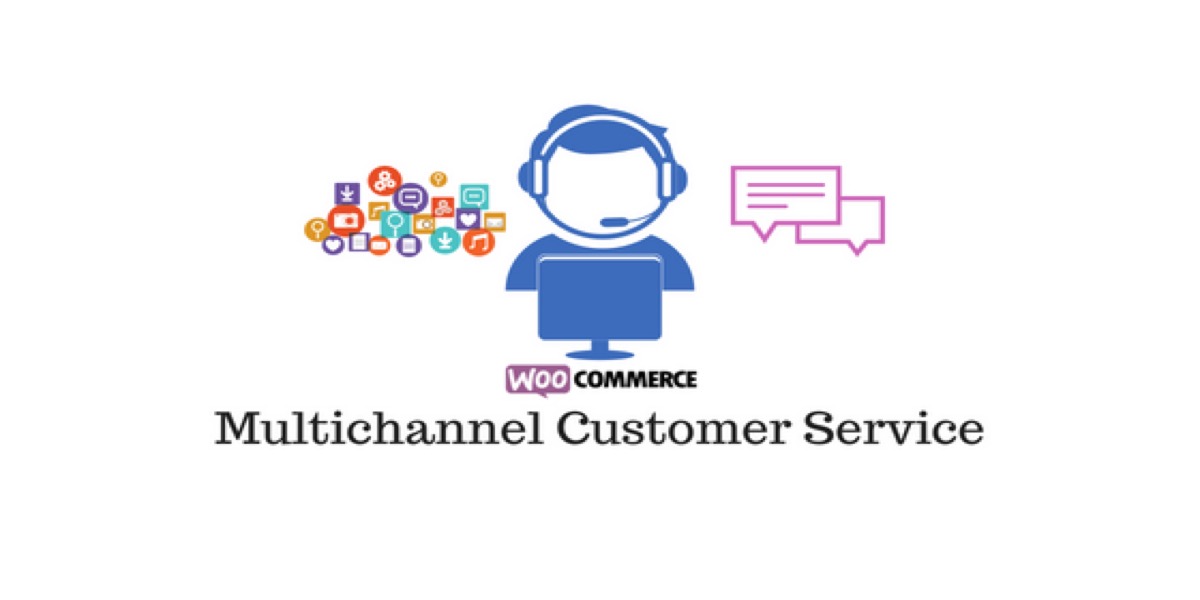
If you want to customize your site with a lot of non-Woo products, your support options will be even more limited. Before they can help you, WooCommerce support agents will ask you to disable those third-party goods.
WooCommerce Security
Because WooCommerce is self-hosted, the security of your site is largely in your hands. Sure, WordPress has certain built-in security safeguards, and third-party payment methods mitigate some of your personal risks, but you’re still responsible for keeping your site secure. Choose a safe web host, invest in a decent SSL certificate, and stay current on all security patches.

WooCommerce Price
Pricing is where WooCommerce gets a bit tough. The WooCommerce WordPress plugin, as previously said, is available for free download. Not only that, but the WordPress content management system (CMS) is also free. In certain ways, a WooCommerce website might be as inexpensive as a few dollars each month. That is, provided you find the lowest hosting, use a free theme, and don’t pay for any plugins, extensions, or web design services. What you’ll need is the following:
- WordPress is a completely free platform.
- The WooCommerce plugin is available for free.
- A web server might cost anything between $3 and hundreds of dollars per month (we recommend SiteGround or WP Engine). A $5 to $10 per month shared hosting plan would probably suffice for a modest website. However, when your business grows, you’ll most likely need a VPS or dedicated server. Those are more expensive.
- A WooCommerce theme ranging in price from free to around $200. Personally, I would not spend more than $100 on a theme. There are a lot of amazing $50 to $100 themes out there. Keep in mind that this is a one-time fee.
- You shouldn’t have to pay more than $10 per year for a domain.
- Most ecommerce stores don’t have to pay for plugins and extensions. Some extensions, however, are essential for specialist sites, and you may discover that a premium plugin is more to your liking. Despite the fact that this is free, I’m going to set aside $10 every month for it because I generally end up paying for one or two plugins.
- Services for web design – It’s impossible to put a figure on it, but it may be in the tens of thousands. My advice is to do as much of the design work as possible on your own. Then, on occasion, spend $500 on high-quality freelancing work.
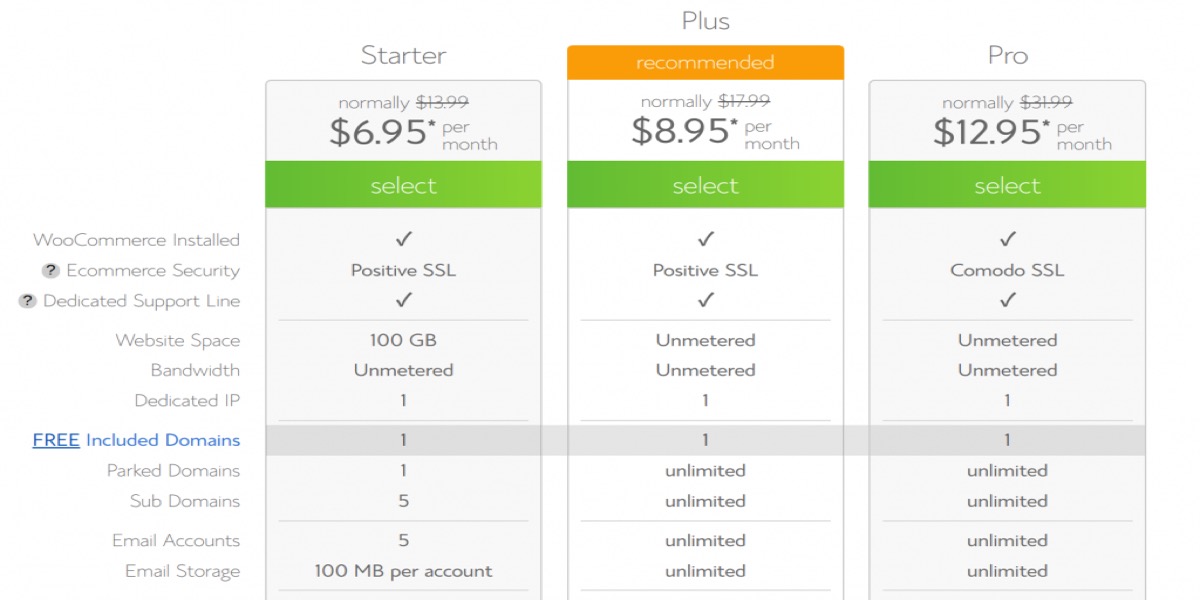
WooCommerce SEO and mobility
SEO:
WooCommerce was created using code that has already been optimized for search engines. Unfortunately, this does not imply that the plugin can significantly improve your site’s chances of appearing in the top ten search results — at least not on its own. A third-party program like Yoast can enhance WooCommerce’s SEO capabilities.
Users of WooCommerce that host their sites with Bluehost should look into tools like All-in-One SEO Pack and SEOPressor. Basic programs like SEO Squirrly can help you drive your WooCommerce-powered store to the top of search engine results with minimal work if you’re not sure in your SEO talents.
Mobility:
For Android and iOS smartphones, the WooCommerce shop store management app is available. It allows you to maintain your product inventory, receive transactional notifications, manage orders, and even manage several online storefronts while not having the full range of functions available on a desktop. The software also provides real-time transaction statistics.
Page speed:
The speed with which your WooCommerce website loads will be determined by your hosting setup and service of choice. WordPress.com ecommerce sites can load in as little as 3.22 seconds, however self-hosted WordPress.org websites are depending on their server.
Conclusion
WooCommerce is a WordPress-specific shopping cart plugin that is free and open-source. Although WooCommerce is free to download, running a WooCommerce store is not. Web hosting and the addons you’ll need to run sophisticated features will cost a pretty penny. Regardless, it’s easy to see why so many merchants trust WooCommerce with their online store: it provides the capabilities you need at a low cost, and it interacts with a platform you’re likely already using.
I hope you find this article about WooCommerce Reviews useful!





